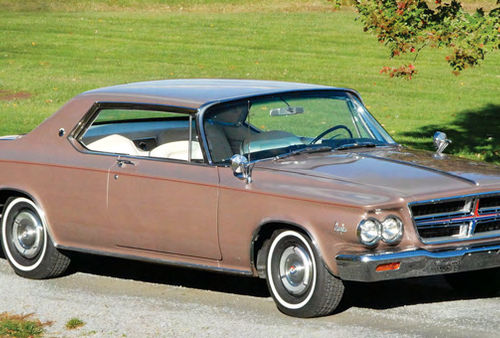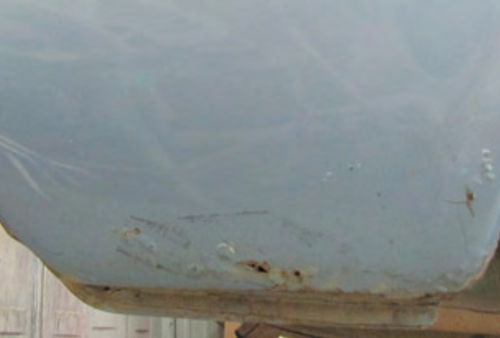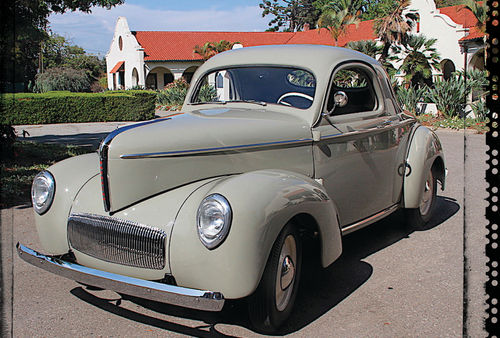How a manual (standard) transmission works, and how to fix common issues
THE 1904 HOLZMAN horseless carriage wheezed and creaked as it huffed up a slight hill at the Pebble Beach Concours d’Elegance. As I admired it, I thought about how remarkable this car really was. Although it was fairly typical for cars of its time — with a simple engine under the seat, tiller steering and tall, skinny, buggy wheels — the striking thing about it was that its power traveled to the rear wheels via hemp rope belts. It was one of the more novel solutions to the question of power transmission on early gasoline-powered cars.
Friction rollers, leather belts, sprockets and chains, as well as planetary gears were also tried in early automobiles with some success, but each of these systems had shortcomings. Sequentially geared transmissions were tried, too. With sequential gearing, as anyone who has owned a motorcycle knows, you must go through first, second and third, in order to get to fourth gear. There are no shortcuts. To get back to low, you must reverse the entire process and go from fourth to third, then third to second before shifting back into first. Some modern, Formula One race cars are still set up this way. It works fine for Ferrari because their drivers never have to back into parking spaces in the supermarket parking lot or inch along in commuter traffic during a race.
To deal with ordinary, day-to-day driving problems, sliding-gear transmissions, also known as standard transmissions, were developed to allow a person to go from any gear directly into any other gear with a minimum of fuss. The design the automotive industry eventually settled on seems remarkably simple and ingenious once you understand it.
A Close Examination
On a work bench, the typical standard transmission appears to have a single shaft running through it. The front end of this shaft goes to the clutch, and the back end turns the driveshaft. However, appearances are deceiving. What you see are actually two, in-line shafts that can be linked and unlinked as needed. If you shift a standard transmission into neutral, then turn the front (clutch shaft), the shaft protruding from the back (output shaft) will not turn. If you then shift the transmission into low gear and turn the clutch shaft, the output shaft will turn, but much more slowly than the clutch shaft. And if you put the transmission into reverse, the clutch shaft will turn one way, but the output shaft will turn in the opposite direction.

The only time the two shafts are directly linked together to become one is when the transmission is in high gear, or direct drive. This is accomplished by means of a dog-clutch arrangement that consists of an internal gear in the forward sliding-gear, and the clutch shaft driving-gear. When these are meshed together, the two shafts rotate as one (Illustration 1). In high gear, while the transmission is spinning at 1-to-1 with the engine rpms, the differential at the rear still reduces the engine’s rpms by 4to-1 at the wheels. If it didn’t, at 3000 rpms, your car would go about 240 mph, assuming your engine had enough torque to make it happen. Inside the transmission, below the clutch shaft and output shaft combination, is a cluster-gear assembly spinning on a countershaft. When the engine is running and the clutch is engaged, this cluster-gear assembly turns at all times. It rotates when the transmission is in neutral or high gear even though it is not driving anything at those times. One reason for this is that the gears on the cluster-gear assembly also act as paddle wheels and keep the rest of the transmission lubricated by splashing gear oil around.

When the slider-gear transmission is in neutral, the two slider gears are not meshed with the gears on the countershaft, and the dog clutch — tying the clutch shaft to the output shaft — is also disengaged (Illustration 2). When the transmission is in low: gear, the rear slider “gear “is pulled forward to mesh with the small gear near the center of the cluster gear assembly. The power is then transmitted from the clutch shaft to the cluster-gear assembly, then back up through the rear slider gear to the output shaft (Illustration 3).

To reach second gear, the rear slider gear is disengaged, then the forward slider gear is pushed back to mesh with the bigger gear near the center of the cluster-gear assembly (Illustration 4).
When one gear turns another, they rotate in Opposite directions. So when your transmission is in second gear, for example, the clutch shaft turns the cluster gear in the opposite direction, but the cluster gear then turns the slider gear on the output shaft in the same direction as the clutch shaft, so the direction of rotation of the clutch shaft is restored.

When in reverse, the output shaft must spin in the opposite direction of the clutch shaft. To achieve this, an idler gear — which is in constant mesh with the cluster gear assembly — is employed. When the rear slider gear is moved back to shift into reverse, it meshes with the additional idler gear and not the cluster-gear assembly, so it turns in the opposite direction of the clutch shaft (Illustration 5).

Evolutionary Changes
Around the time of World War I, the slider gear transmission was almost universally used in automobiles, with the planetary-geared Model T Ford being one of the rare exceptions. There were still a few problems with slider gear transmissions, however. The square-cut gears of the time didn’t mesh together smoothly, were noisy in operation, and required a technique called double clutching to shift them properly. (Double clutching refers to depressing the clutch once to shift from a gear into neutral, releasing the clutch, then depressing it again to put the transmission into the next gear.)

In 1929 Cadillac changed all that when they came out with synchromesh. Experience had shown that dog clutches (such as were used for high gear) meshed a lot more easily than spur gears. Friction cones were used to get the gears spinning at the same speed before they meshed. This combination resulted in a transmission that could be shifted quite smoothly. The final touch was added in 1932 when helical-cut gears — sliding on spirally splined shafts — were introduced. They meshed much more readily than the square-cut gears (Illustration 6).

In the illustration showing the synchromesh mechanism in a more modern four-speed transmission, there is a synchronizing cone and gear-clutch arrangement that shifts between third and high. Assembled onto the dog clutch is a spring-controlled overriding device. Moving the shifting collar as you shift from third to high causes it to engage with the external friction cone of the high gear. The spring-controlled overriding feature permits the cone to come into contact with the high gear before the teeth of the dog gear mesh with the teeth of the high gear. As soon as the overriding device contacts the friction cone of the high gear, the gear begins to turn at the same speed as third gear. Further movement of the gear-shift lever causes the gear clutch to move over the cone and engage the gears.

The synchromesh standard transmission gives a driver a choice of convenient options even though the engine only operates within a limited rpm band. That's assuming the transmission is working properly. If they are not abused or neglected, standard transmissions are dependable. They usually operate twice as long as the engines that drive them.
If you suspect your standard transmission is giving you trouble, check out other possible sources, such as clutch and differential, then use the trouble-shooting tips on this page to help determine what is wrong. In the next issue, we will show you how to tear down a typical three-speed standard transmission and rebuild it.
1. Transmission slips out of high and/or second gear:
Transmission mounting bolts loose.
Linkage interferes with engine mounts or clutch-release-bearing lever.
Linkage does not operate freely (worn or bent).
Gears do not fully engage.
Damaged output-shaft pilot bearing
Clutch-gear-bearing retainer broken or loose.
Misalignment between clutch and transmission.
Worn or broken synchronizer assembly.
Weak springs in shifting detents.
2. Transmission slips out of low and/or reverse:
First and/or reverse gears damaged from operating partially engaged.
Improperly mated splines on inside of first and reverse gear and/or external splines on second and third synchronizer sleeve.
Improperly adjusted linkage.
Weak springs in transmission cover.
3. Noisy in all gears:
No lubricant.
Worn countershaft bearings.
Worn or damaged clutch gear.
Damaged clutch gear or output-shaft bearings
Damaged speedometer gears, or dry speedometer-drive cable.

4. Noisy in high gear:
Damaged clutch-gear bearing.
Damaged output-shaft bearing
Damaged speedometer gears, or dry speedometer-drive cable.
5. Noisy in neutral:
Damaged clutch-gear bearing
Damaged output-shaft pilot-bearing roller.
6. Noisy in all reduction gears but not high gear:
Insufficient or incorrect lubricant.
Worn or damaged cluster-assembly gear or clutch-shaft gear.
7. Noisy in second gear only:
Damaged or worn second gear on cluster-gear assembly.
Worn rear bearings on cluster-gear assembly.
8. Noisy in low and reverse
Worn or damaged first and reverse slider-gear.
Damaged or worn low and reverse gears on cluster-gear assembly.
9. Noisy in reverse only:
Worn or damaged reverse idler-gear
Worn reverse idler-bushings.
Damaged reverse gear on cluster-gear assembly.
10. Hard shifting:
Clutch linkage out of adjustment.
Shift linkage out of adjustment.
Linkage binding due to bent, worn or broken parts.
Lack of lubricant in transmission.
Damaged or worn synchronizer assembly.
11. Leaks lubricant:
Transmission has been overfilled.
Damaged gaskets.
Transmission vent plugged with dirt.
Extension housing rear seal leaks.
Side-plate gasket leaks due to loose bolts or defective seal.
Loose or broken clutch-gear-bearing retainer.
12. Excessive play in gears:
Second gear thrust-washer worn.
Worn cluster-gear rear bearing.
Excessive end play in cluster-gear assembly.















